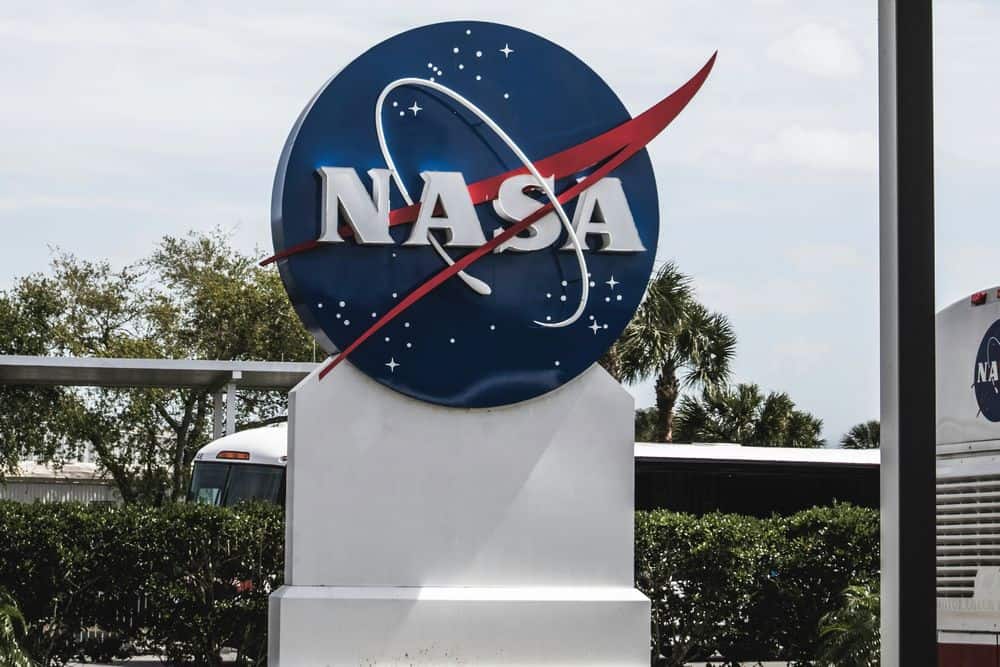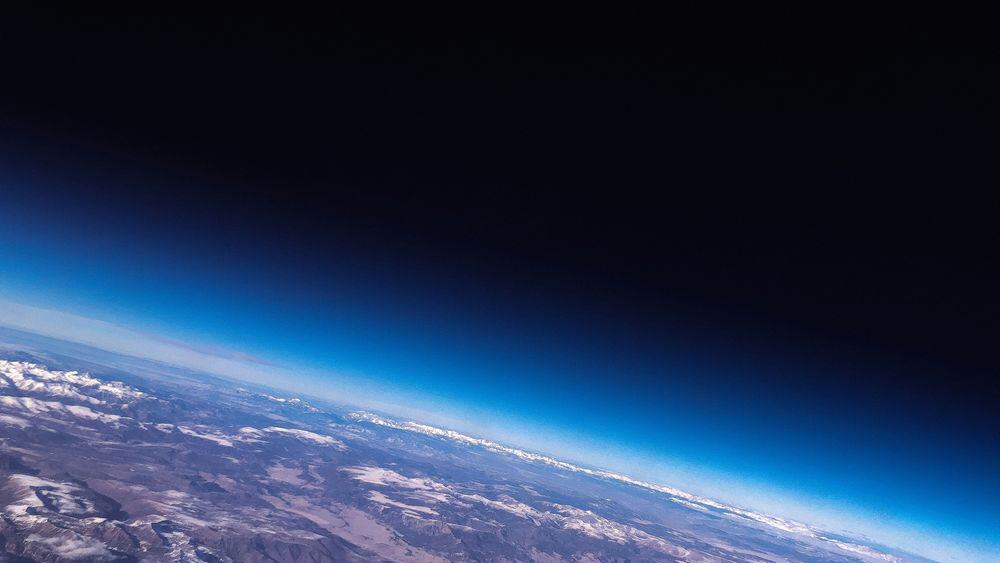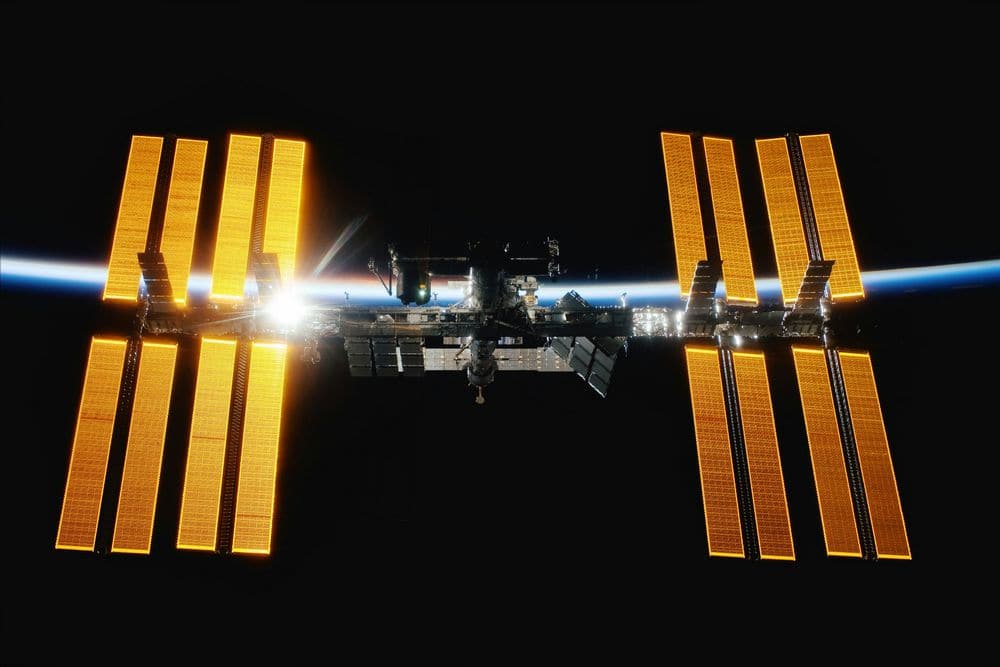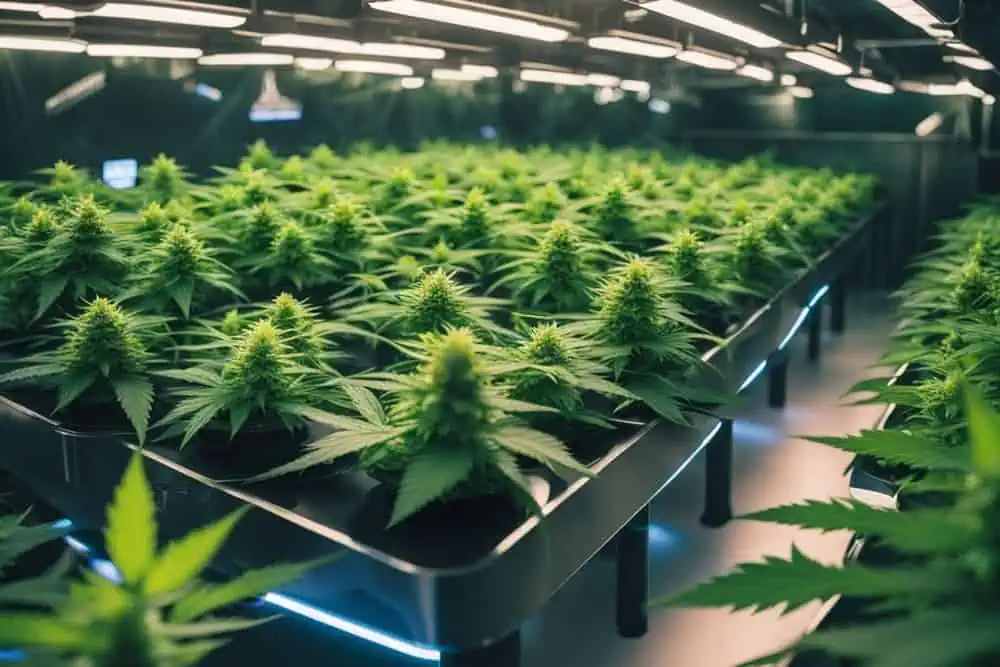 The exploration of space is one of humanity’s most ambitious undertakings.
The exploration of space is one of humanity’s most ambitious undertakings.
With it comes the challenge of cultivating life-supporting plants in the cosmos.
Growing cannabis in space may sound like science fiction, but it’s an idea that’s gaining traction among scientists and space agencies.
The microgravity environment of outer space presents a unique laboratory for studying the growth patterns and potential genetic changes in plants, and cannabis is no exception.
The interest in growing cannabis in space isn’t just for novelty—the research could have practical applications.
Studies on how plants like cannabis adapt in microgravity conditions can provide insights on long-term human space travel and even improve agricultural practices on Earth.
Plus, with the push towards the commercialization of space, the possibility of producing high-grade, medicinal cannabis in orbit could transform how we view pharmaceutical cultivation.
Let’s dive in and take a much closer look at the cultivation (and possible consumption) of cannabis in space.
Contents
- 1 Cannabis And Space Exploration
- 2 Growing Cannabis In Microgravity
- 3 Botanical Aspects Of Cannabis In Space
- 4 Life Support Systems And Plant Growth
- 5 Scientific And Legal Implications
- 6 Technological Innovations And Experimentation
- 7 Prospects And Predictions For Cannabis Growth In Outer Space
- 8 Smoking Weed In Space
- 9 Cannabis In Space: Final Thoughts
Cannabis And Space Exploration
Cannabis research has extended beyond our planet as scientists consider the effects of space conditions on plant growth.
Initially, such research was speculative and limited to the realm of science-fiction, but now there’s substantial interest in understanding how plants, including cannabis, can be cultivated in microgravity environments like those found on the International Space Station.
The unique properties of cannabis, including its medicinal value, have made it a subject of interest in studies about space sustainability and long-term space missions.
Current Engagements Of Space Agencies In Cannabis Research

NASA and other space agencies have started to evaluate the viability of plant growth in outer space, which could include crops like cannabis for medicinal purposes.
While traditional missions have incorporated the growth of basic vegetables—for instance, turnips or basil—on the moon, there’s speculation that future initiatives could see the cultivation of specialized plants.
Space’s microgravity presents unique challenges and opportunities for plant growth, potentially leading to new agricultural techniques and crop yields that could benefit medical research and support life on long-duration space flights, or even extraterrestrial bases.
Growing Cannabis In Microgravity
Exploring the final frontier involves examining how familiar processes play out in unfamiliar environments. Gravity—or the lack thereof—plays a pivotal role in cannabis cultivation beyond Earth.
Effects Of Microgravity On Cannabis Cultivation
Microgravity presents a unique environment that alters how plants, including the cannabis plant, grow. Gravity, as you know it on Earth, is greatly reduced in space, leading to microgravity conditions on the International Space Station (ISS).
This reduction of gravitational force can cause changes in the cellular structure and growth patterns of plants, potentially leading to more rapid cell growth and a higher rate of mutation.
This environment paves the way for intriguing research, such as examining microgravity’s effect on plants, which could influence the development of new cannabis varieties with unique properties.
Challenges And Solutions In Microgravity Farming
When you grow cannabis in microgravity, the challenges you face are like no other. Without gravity, there’s no “up” for the roots to grow away from, or “down” for the shoots to grow towards. This lack of direction can cause disorienting growth patterns that are vastly different from what you’d expect on Earth.
Addressing these concerns, researchers have developed specialized cultivation chambers to manage light, water, and nutrient delivery in a manner that promotes healthy growth.
- Water and Nutrients: In microgravity, water doesn’t flow downwards like it does on Earth, making traditional watering impossible. Instead, automated systems can deliver a mist or vapor, ensuring plants receive the hydration and nutrients they need.
- Lighting: Gravity is no longer there to assist the normal direction of growth towards light; lighting in cultivation chambers is, therefore, evenly distributed to ensure plants grow uniformly.
Innovative solutions in experimenting with microgravity are already being put to the test, with hopes of refining cannabis growth processes for medical compounds, and perhaps, eventually recreational use.
Botanical Aspects Of Cannabis In Space

As mentioned, zero-gravity environments present unique challenges for plant biology. In particular, cannabis plants, like all flora, are adapted for Earth’s conditions—understanding how they respond to the absence of gravity is crucial for successful cultivation off-planet.
Understanding Cannabis Biology In Zero-G Environments
In the unique environment of space, our understanding of cannabis biology is put to the test. Without the pull of gravity, cannabis seeds may experience difficulty orienting themselves, and the natural process of water distribution within the plant could be disrupted.
Normally, roots grow downward and stems grow upward, due to gravitropic responses. But in space, this mechanism is absent. Here are some pivotal factors to consider:
- Seed Germination: Can cannabis seeds even sprout in space? Monitoring germination rates and the initial growth direction is vital.
- Root Development: Root systems might struggle to establish without gravity, affecting nutrient uptake.
Research into growing marijuana in zero gravity environments continues to shed light on these complexities.
Photosynthesis And Cannabis Plant Growth In Space
Photosynthesis, the process by which plants convert light into energy, could be profoundly affected by a space environment. Here’s what to keep an eye on:
- Light Sources: Artificial lighting mimics the sun, but adjustments are often needed to optimize photosynthesis for marijuana plant growth.
- Temperature and Humidity Control: These two factors are pivotal in photosynthetic efficiency. Careful regulation is necessary to maintain optimal conditions for growth.
In space, your attention to these elements must be meticulous, since even small deviations can significantly affect the growth and health of cannabis plants.
Life Support Systems And Plant Growth

When cultivating cannabis in the unique environment of space, it’s crucial to optimize life support systems to sustain plant growth. Your space-faring cannabis will rely on advanced techniques like hydroponics and aeroponics, and precise air and oxygen circulation mechanisms indispensable for both human and plant life.
Hydroponics And Aeroponics In Space Stations
Hydroponics is the backbone of growing cannabis without soil, using a water-based, nutrient-rich solution. It’s a clean and efficient method, perfect for space conditions.
The closed-loop system recycles water and nutrients, ensuring that your cannabis plants get exactly what they need while conserving precious resources.
Aeroponics takes this a step further by misting the plant roots with nutrients, significantly reducing water usage—a critical factor in space. With fine-tuned aeroponic systems, your cannabis plants can thrive even in the absence of gravity, making it a scalable option for long-term missions.
Air And Oxygen Circulation For Cannabis
Cannabis plants can not only provide a potential medicinal resource, but also contribute to the life support system by producing oxygen. In turn, they require a careful balance of air circulation to maintain adequate levels of CO2 for photosynthesis.
Implementing specialized air circulation systems ensures that your plants get the right mix of gases. This exchange of oxygen and carbon dioxide keeps both crewmembers and cannabis plants healthy, creating an interdependent relationship crucial for extended time in space.
Scientific And Legal Implications

As we explore the possibilities of cannabis cultivation beyond Earth, it is crucial to consider the scientific advancements that could emerge, as well as the complex legal landscape that governs space activities.
Legal Considerations For Cannabis Research In Space
Navigating the legal framework for conducting cannabis research in space is a task that combines international space law with the regulatory aspects of cannabis.
On the International Space Station (ISS), a multinational cooperative framework, research activities are subject to the laws of the partner nations involved. Since cannabis legality varies by country on Earth, determining jurisdiction and compliance in space can be quite complex.
For instance, if research conducted on the ISS involves cannabis, it would have to adhere to the laws of the nation that owns the specific module where the research is taking place.
The Impact Of Space Research On Cannabis Science
Space research can vastly enrich our understanding of cannabis. Experiments in microgravity environments, like those found on the ISS, potentially unveil how cannabis plants respond to stressors differently in space.
This could lead to new insights into plant biology, genetic expression, and cultivation techniques that may improve cannabis production back on Earth.
Researchers believe that studying hemp-derived CBD in space could open new doors in understanding how microgravity affects plant growth. These discoveries have far-reaching implications, not just for cannabis science but also for broader agricultural practices and sustainability on Earth.
Technological Innovations And Experimentation

In the realm of cannabis cultivation, the final frontier isn’t a far-off planet—it’s space! Your curiosity might be piqued by how technological advancements are enabling this bold venture, and rightly so. Let’s explore the innovations guiding this green endeavor among the stars.
Advanced Lighting Systems For Cannabis Growth
When you think of growing cannabis in space, LED lighting is a game-changer. Scientists have honed in on specific light wavelengths ideal for plant growth, which means in a microgravity environment, LED lights can simulate the sunlight cannabis needs.
This tech not only supports photosynthesis but is also more energy-efficient and has a longer lifespan compared to traditional grow lights.
Biotechnology In Space Farming
The biotechnological advances in space farming are remarkable. For instance, researchers are looking at gene expression in cannabis plants to understand how they adapt to the stresses of space.
Imagine bioreactors orbiting the Earth, harnessing microgravity to develop new cannabis strains with potentially groundbreaking therapeutic properties.
Space Entrepreneurship And Cannabis
Space entrepreneurship is soaring, and cannabis isn’t being left behind. You’ve heard of SpaceX, Elon Musk’s trailblazing company. It’s not just about rockets; it’s also about creating ecosystems for life to thrive beyond Earth.
A SpaceX craft, the CRS-20, has already carried cannabis plant cell cultures to the ISS, in collaboration with companies like Space Tango and SeedHub, pushing the boundaries of what’s possible in agriculture.
Prospects And Predictions For Cannabis Growth In Outer Space

With the strides made in space exploration, we might soon witness the cultivation of cannabis beyond Earth. And the potential implications are truly vast. Here’s what you should know about the burgeoning field of extraterrestrial cannabis cultivation.
Potential Of Marijuana Production On Other Planets
It may not be science fiction much longer! The idea of growing cannabis on other planets may someday soon become a reality.
Given the unique environmental conditions of outer space, researchers are keen to understand how low-gravity environments could enhance, or inhibit, the growth of cannabis plants, particularly their cannabinoid production, such as THC and CBD.
The International Space Station, serving as a laboratory in the sky, has seen advancements in plant cultivation. This paves the way for cannabis and its therapeutic compounds, like CBD, to be grown and studied in microgravity, potentially revealing groundbreaking data for medical use.
Future Collaborations And Projects
Expect to see a range of international collaborations aiming to explore cannabis growth in space. These partnerships could lead to new space missions specifically focused on cultivating and studying marijuana in a zero-gravity environment.
The knowledge gained from such projects may not only advance our understanding of cannabis as a plant but also improve how we cultivate crops on Earth.
With continuous innovations and an ever-expanding horizon, your curiosity in how cannabis adapts and thrives in outer space could be satiated in the not-so-distant future.
Smoking Weed In Space

When you envision smoking weed in space, you might imagine a cosmic experience far different from what you’re accustomed to here on Earth. However, the reality is grounded in the physics of space itself.
Microgravity plays a significant role in altering how smoke behaves. On Earth, smoke rises due to convection currents as warm air rises and cooler air sinks. In the weightlessness of space, this process is absent.
If you were to light up in a spacecraft, the smoke wouldn’t waft away and disperse as it does on Earth. Instead, it would form a hovering cloud that wouldn’t dissipate quickly, potentially impeding visibility and interfering with the spacecraft’s sensitive instruments.
Moreover, the spacecraft’s environmental systems are designed to keep the air clean and free of contaminants. The introduction of smoke might overload the filters and compromise the life support systems that recycle air and remove carbon dioxide.
Fire hazards also pose a significant risk.
Aboard a space station, any open flames would not behave predictably, due to the lack of gravity. A fire could spread in all directions and become unmanageable, jeopardizing the safety of astronauts and equipment.
With these concerns in mind, smoking weed—or anything else, for that matter—is currently prohibited aboard spacecraft and space stations.
The unique challenges of space environments require strict adherence to safety protocols to ensure the well-being of both astronauts and their missions.
Cannabis In Space: Final Thoughts
The idea of cultivating cannabis in space presents an intriguing frontier for both scientific inquiry and agricultural innovation. As we have seen, the unique conditions of space could potentially lead to the development of cannabis strains with unprecedented qualities.
While the logistical and ethical considerations of such an endeavor are significant, the discussions and preliminary research, like the insights from retired Canadian astronaut Chris Hadfield, suggest that the concept is more than just a pipe dream.
The potential for cannabis cultivation in extraterrestrial environments could open up new avenues for medical research and recreational use, and perhaps even contribute to the sustainability of long-term space exploration.
As humanity continues to reach for the stars, it’s clear that the relationship between cannabis and space exploration is an area ripe for exploration, with possibilities as vast as the cosmos itself.
Leave a Reply